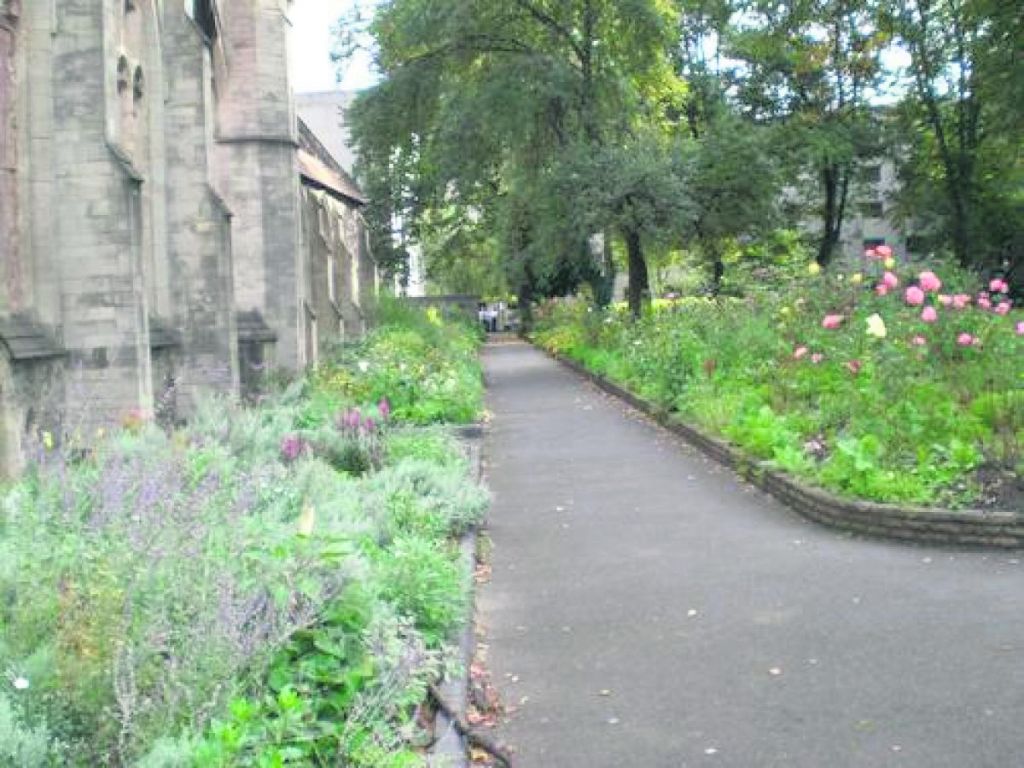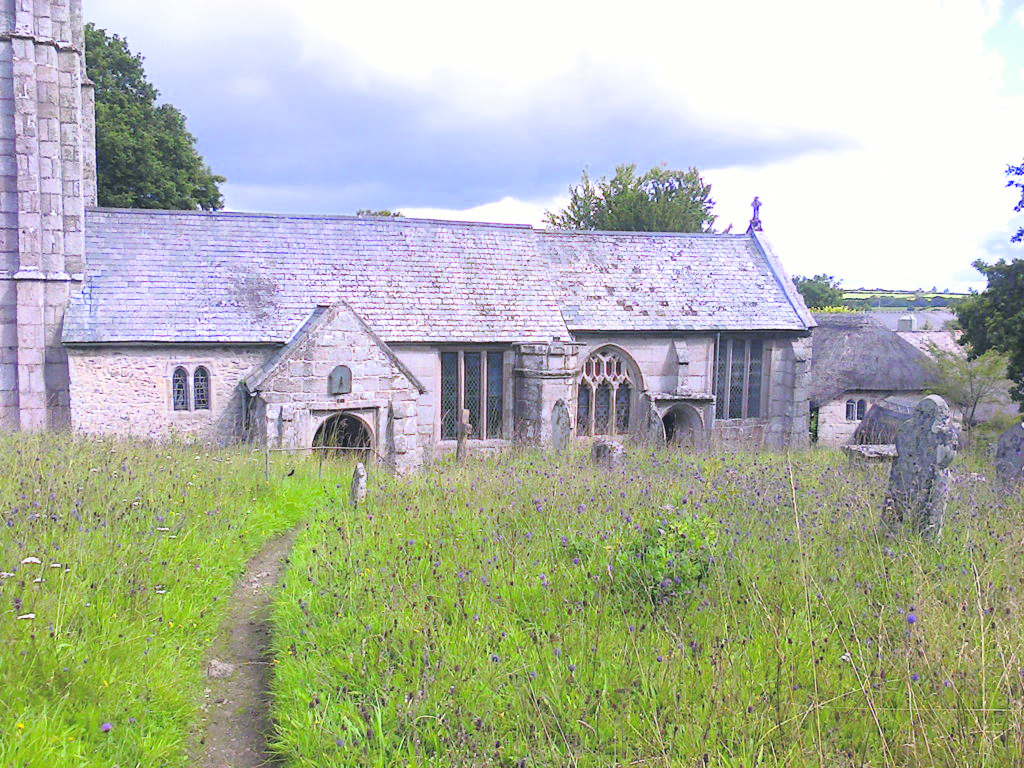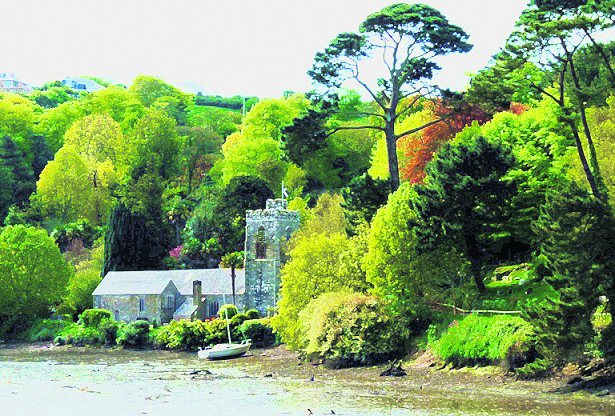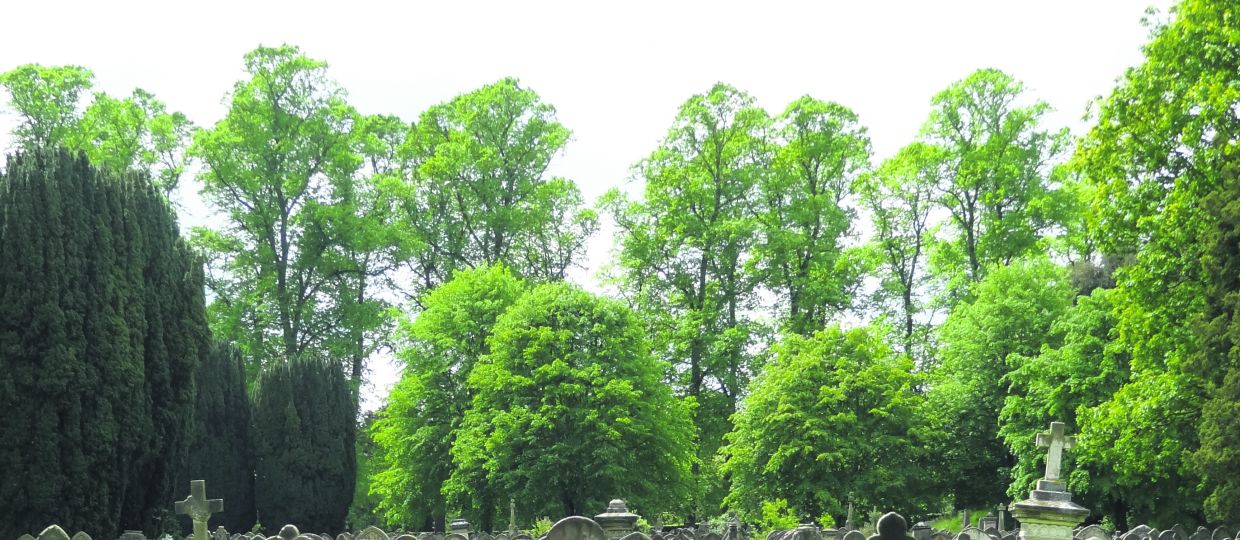Over six out of ten churches in Britain have grounds they say could be used better as gardens and there’s a new desire to use all this outside space better. An award-winning Chelsea Flower Show garden is just one of several new initiatives in our cemeteries.
Over 65 per cent of churches in this country have grounds that could be used for gardening. One in four of churches surveyed recently said they were keen to use their outdoor space better but needed advice about what to do.
A national campaign is now set to offer help and support to clear overgrown, untidy churchyards, invest in wildlife surveys, establish more welcoming gardening themes to encourage visitors into burial grounds and involve schools and communities in ‘gardens within the churchyard’ projects.
It all means that churchyards throughout the country are set to be a focal point for communities to put more emphasis on gardening and the preservation of wildlife in these pieces of land.
Churchyards are important for their habitats and as refuges for wildlife and plant life. Most churches have some green space. And in some urban areas they are the only green ‘breathing’ space available for both wildlife and people.
One estimate suggests estimate that 10,000 of 16,000 churches have churchyards. That’s the area of a small national park. It’s a precious resource which can make a huge difference to the biodiversity of the UK.
Sarah Eberle’s Psalm 23 Garden for Bible Society at the RHS Chelsea Flower Show which won a gold medal will also become part of the campaign to see more done in churchyards.
“I am absolutely over the moon,” said Sarah. “I really love the garden. Setting out to create tranquillity in a show site in the middle of London where you can actually impart that sort of emotional response to a garden is always the biggest challenge.”
The award-winning garden is set to spearhead a campaign to see the creation of community gardens around the country, as we emerge from the pandemic.
The Bible Society has now published an easy-to-use guide on how to create such a community garden and puts emphasis on churchyard land.
The first Psalm 23-inspired community garden was created during lockdown in Tadley in Hampshire.
The desire to improve the look of church cemeteries is an ongoing theme which has moved in recent years from just tidying projects to schemes to use the gardening space better with creating planting – and the encouragement of wildlife.
Caring for God’s Acre is a conservation charity which provides advice and support to community groups and individuals to help with the management and interpretation of churchyards, cemeteries and burial grounds, including green burial grounds.
It says: “Cemeteries grounds are not nature reserves but places of burial and remembrance, and management decisions need to consider the views and expectations of the local community.
“People want to be able to use the site, visit graves, read memorial inscriptions and feel that the management and use is appropriate and respectful. Most churchyards and an increasing number of cemeteries are managed by volunteers, be it the local congregation or a Friends group and Caring for God’s Acre supports encourages and inform these volunteers.”
A national scheme to create community gardens using the world’s most famous Bible verses has enlisted the help of an award-winning Berkshire church that prides itself on its idyllic outside space.
St James’ Church in Finchampstead, near Reading, won The Church Times’ Green Church Award for its churchyard in 2017. The church’s rector, Canon Julie Ramsbottom, says:
“I think churches should think hard about maximising the use of their surroundings. It’s so important as a message to both the church and community, that the church doesn’t just take place inside the building. Church is more outside than inside.”
Julie and churchwarden, Ed Sampson, feature in a video shot by the Bible Society to promote community gardens. At the centre of the Bible Society’s campaign was the development of The Psalm 23 Garden at Chelsea Flower Show, bringing the famous text of ‘The Lord is my shepherd’ to life.
“I want to engage people’s emotions,’ says Sarah about The Psalm 23 Garden. ‘It will stop people in their tracks and make them look. The psalm is quite clear in its description of landscape,” she adds.
According to Christian Research, 65 per cent of churches have grounds that could be used for gardening. One in four of churches surveyed said that they were keen to use their outdoor space, but needed advice about what to do.
“Anyone who gardens knows that it increases your sense of wellbeing,” says Hazel Southam, spokeswoman for Bible Society. “But gardening together on a shared project is particularly special.
Churchyard visitors
A recent survey based on visitors to churchyards established how important wildlife was to them. A total of 95 per cent of respondents confirmed they noticed the wildlife in their churchyards, with wildflowers being the wildlife which most caught people’s eye, followed by birds, butterflies and trees.
The most popular reason given for visiting a churchyard is for religious reasons. A third of visitors stated they visited churchyards to ‘a peaceful moment ’and ‘to enjoy nature’, one in eight visited churchyards to see the grave of a loved one and ten per cent for contemplation or prayer.

Find out what wildlife lives in your churchyard
More communities are being urged to take a first step to research wildlife in their local churchyard and consider what more can be done to develop areas as a garden. If any churchyard’s natural heritage is under threat, then you might consider getting a professional survey done. But if you just want to understand your area better, then try these basic steps:
- Choose a day between March and September when plants are in flower and habitats are at their most active
- Start with a sketch map of the churchyard and mark it with basic features like buildings, paths, walls, in-use burial areas and compost heaps
- Record the trees, their type, circumference, estimated height and spread of their branches
- Outline the broad areas of habitat (e.g. areas of scrub, regularly cut grassland, shady areas and biodiverse areas)
- Take photographs and record where the photograph was taken, the direction and the date
- Record the birds, animals and insects you can see and where you saw them
The Beautiful Burial Ground Project is putting burial grounds across England and Wales on the map by revealing their hidden heritage and importance to biodiversity. Funded by the National Lottery Heritage Fund it supports people to learn about, research and survey the species in, and history of, their local burial grounds. Started in May 2018 it is currently running through to December 2022. One of its functions is to raise the importance of gardening, plants and flowers in cemeteries.
It also encouraging people to send in a list of species they see cemeteries – so far it has received over 75,000 records.
www.caringforgodsacre.org.uk
Why see cemeteries as spaces for nature?
- They’ve been there a long time. Most churchyards and cemeteries date from well before the widespread losses to our natural heritage occurred, and so are arks for species and habitats going back through the centuries. Some burial sites may have been founded on older pre-Christian sacred sites whilst many younger burial grounds such as the Victorian cemeteries have been in existence for over 100 years.
- The management of burial grounds hasn’t changed over time. Apart from grave digging, burial grounds are undisturbed, timeless sanctuaries where plant and animal populations have increased.
- They occur in every town, city and rural parish. Once you start to view burial grounds as wildlife havens it’s exciting to think how many there are and how they link with other green spaces and corridors. The exact number of burial grounds is not known but is in the order of 20,000.
- They are accessible. Not only are they widespread, but they also have full public access, insurance and some facilities. This makes them great for visits, events, volunteering and as places for learning, usually within walking distance.
The role of graveside gardening
Graveyards and cemeteries are spaces for burial and mourning, but they can also be spaces for life, community, and healing. This is where grave gardening comes into play, which is the art of creating a garden at the location of your loved one’s grave.
In Victorian times, garden style, or rural style, cemeteries became popular as both a way to deal with overcrowded cemeteries, and as a way to create natural spaces within urban centers to attract visitors. Before public parks existed in urban areas, these early cemeteries acted as both burial grounds and relaxing destinations where people would take picnics around the gravestones, and were designed with landscapes full of trees, shrubbery, and flowers growing amongst the tombstones.
If you want to start your own garden at a loved one’s grave, check the cemetery’s policies or by-laws. These policies will vary wildly, so it is important to know before you start what you can and cannot plant at a gravesite. When choosing what to plant, remember to choose plants that are not invasive, and can survive in the conditions found at the gravesite.
Two churchyards of great beauty

St Mary the Virgin, Throwleigh, Okehampton
Set in a Dartmoor village the churchyard has areas of wildflowers, ox eye daises, yellow rattle, betony, mallow, some orchids and devils bit scabious in the late summer. Butterflies include marbled white, small pearl bordered fritillary and the day flying Chimney Sweeper moth, indicator of old pasture. It won the Council for the Preservation of Rural England’s ‘Best churchyard in Devon’ competition. It was also designated a ‘County Wildlife Site’ in 2020, the first so far in Devon.

St Mary the Virgin, Throwleigh, Okehampton EX20 2HU
St Just in Roseland
Described by John Betjeman as ‘to many people the most beautiful churchyard on earth’, the gardens of St Just in Roseland, Cornwall have delighted many visitors over many years. The churchyard is open daily, and the St Just in Roseland Church and Garden Fund has been launched to support the upkeep of the gardens and churchyard.
St Just in Roseland, Truro TR2 5JD












